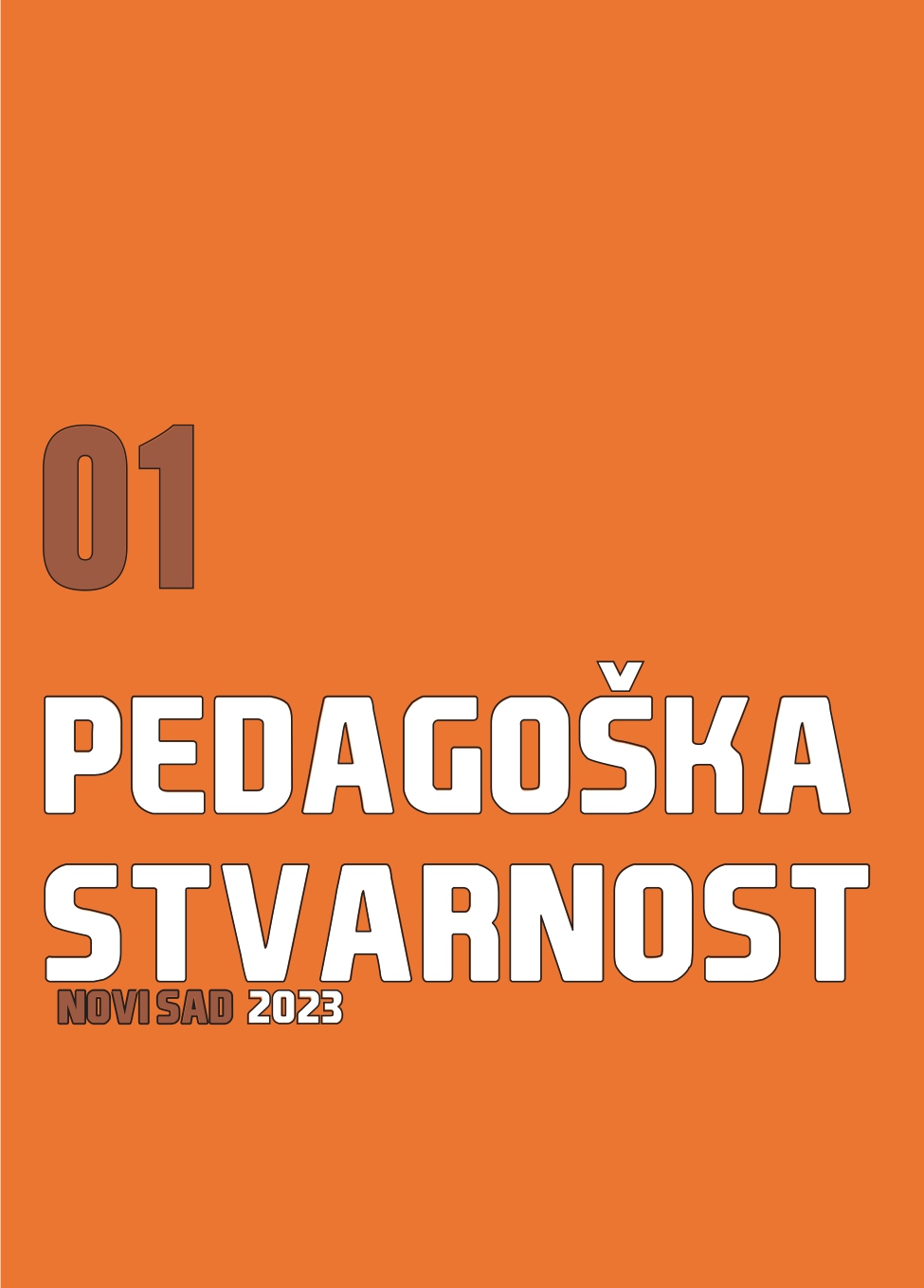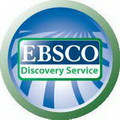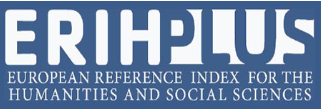RODNO ODGOVORNO OBRAZOVANJE: SLUČAJ BOSNE I HERCEGOVINE
Originalni naučni rad
Apstrakt
Rodno senzitivno, rodno odgovorno ili rodno transformativno obrazovanje su termini koji su aktuelni u globalnom kontekstu godinama unazad. Bilo da ih tretiramo kao sinonime ili kao tri različite razvojne etape obrazovanja koje u svoj centar stavlja rodnu ravnopravnost, odnosno rodnu dimenziju, neosporno je da bez obzira na sve razlike u tumačenjima da ovakav vid obrazovanja dobija na dodatnom značaju nakon usvajanja Ciljeva održivog razvoja 2015. godine. Obrazovanje u skladu sa Agendom 2030 je inkluzivno, pristupačno, ravnopravno i objedinjuje Cilj 4 (kvalitetno obrazovanje) i Cilj 5 (rodna ravnopravnost). Cilj istraživanja je da utvrdimo kako tri jedina priručnika koji se odnose na rodno odgovorno obrazovanje ili rodno odgovorno podučavanje (''Priručnik za edukatore o rodno odgovornom podučavanju'', ''Priručnik za upoznavanje nastavnika i nastavnica sa metodama rodno odgovornog podučavanja'' i ''Priručnik za integriranje rodne dimenzije u srednje stručno obrazovanje''), a koji su objavljeni u Bosni i Hercegovini u protekle dvije godine, konstruišu i prenose značenja o intersekciji roda i obrazovanja, odnosno konceptu rodno odgovornog obrazovanja.U istraživanju su korištene metode: analiza sadržaja i kritička analiza diskursa. Analizirani priručnici se razlikuju po pristupu, konceptu, sadržaju, ciljnoj publici kojoj su namjenjeni ali ono što im je zajedničko jeste da su usmjereni na rodno odgovorno, a ne rodno senzitivno ili rodno transformativno obrazovanje. Iako u Bosni i Hercegovini postoje pozitivne promjene u kontekstu podizanja svijesnosti o značaju rodno odgovornog obrazovanja potrebno je i dalje raditi kako bi rodno odgovorno obrazovanje zvanično postalo dio kurikuluma, odnosno obrazovnog sistema.
Reference
Apple, M. (2012). Ideologija i kurikulum. Beograd: Fabrika knjiga.
Aronson, B., & Laughter, J. (2018). The theory and practice of culturally relevant education: expanding the conversation to include gender and sexuality equity. Gender and Education, 1-18.
Atthill, C., Jha, J. (2009). The Gender-Responsive School - An Action Guide. London: Commonwealth Secretariat. https://www.thecommonwealth-ilibrary.org/index.php/comsec/catalog/view/93/90/385 Pristupljeno: 06.03.2023.
Budić, S.; Andevski, M.; Gajić, O. (2015). Obrazovanje za ljudska prava između teorije i prakse: naučna monografija sa vodičem za studente. Novi Sad: Univerzitet u Novom Sadu.
Carrera, M., DePalma,R.,Lameiras, M. (2011).Toward a More Comprehensive Understanding of Bullying in School Settings. Educational Psychology Review, 23, 479–499.
Chapman, R. (2021). Moving beyond “gender-neutral”: creating gender expansive environments in early childhood education. Gender and Education, 1–16.
Corson, D. J. (1992). Language, Gender and Education: a critical review linking social justice and power. Gender and Education, 4(3), 229–254.
Crawford, K. (2000). Researching the Ideological and Political Role of the History Textbook - Issues and Methods. International Journal of Historical Learning, Teaching and Research. 1-8.
Crawford, M. (2006). Transformations: Women, Gender and Psychology. Boston: McGrawHill.
Cubero, М. et al. (2015) Teachers negotiating discourses of gender (in) equality: the case of equal opportunities reform in Andalusia, Gender and Education, 27(6), 635-653.
David, M. E. (2015). Gender & Education Association: a case study in feminist education?. Gender and Education, 27(7), 928–946.
De la Torre-Sierra, A.M., Guichot-Reina, V. (2022). The influence of school textbooks on the configuration of gender identity: A study on the unequal representation of women and men in the school discourse during the Spanish democracy. Teaching and Teacher Education,117, 103810, 1-13.
Dorji, T. (2021). Gender Sensitivity in Textbooks in Secondary Education in Bhutan. International Journal of Asian Education, 2 (3), 343-355.
Drudy, S.; et. al. (2005). Men and the Classroom: Gender imbalances in teaching. London and New York: Routledge.
Esen, Y. (2013). Making Room for Gender Sensitivity in Pre-Service Teach er Education. European Researcher. 61(10-2), 2544-2554.
Fairclough, N. (1992). Discourse and social change. Polity Press.
Fairclough, N., & Wodak, R. (1997). Critical discourse analysis. In T. Van Dijk (Ed.),Discourse studies: A multidisciplinary introduction,258-284.London: SAGE.
Forde, C. (2013). Is 'gender-sensitive education' a useful concept for educational policy?. Cultural Studies in Science Education, 9(2),369-376.
Forde, C. (2008). Gender in an inclusion agenda. In: C. Forde (ed.).Tackling Gender Inequality: Raising Pupil Achievement. Edinburgh: Dunedin Academic Press.
Francis, B. (2010). Re/theorising gender: female masculinity and male femininity in the classroom? Gender and Education. 22(5), 477-490.
Frawley, T. (2005). Gender Bias in the Classroom: Current controversies and implications for teachers. Childhood Education, 81(4), 221-27.
Gačanica, L. (ur.) (2022). Priručnik za integriranje rodne dimenzije u srednje stručno obrazovanje. Sarajevo: Deutsche Gesellschaft für Internationale Zusammenarbeit GmbH.
Galamgam, M. et. al. (2021). An Analysis on the Implementation of Gender Responsive Basic Education Policy, International Peer Reviewed Journal,Vol.5, 31-42. https://aseanresearch.org/downloads/astr/publication/5/3%20GALAMGAM.pdf Приступљено: 06.03.2023.
Haggarty, L. (1996). What is content analysis? Medical Teacher, 18(2), 99–101.
Hinton-Smith, T., Marvell, R., Morris, C., & Brayson, K. (2021). It's not something that we think about with regard to curriculum. Exploring gender and equality awareness in higher education curriculum and pedagogy. Gender and Education, 1–17.
IOM (2020). Gender-Responsive Communications Toolkit. Geneva: IOM.
Karlson, I., & Simonsson, M. (2011). A Question of Gender-Sensitive Pedagogy: Discourses in Pedagogical Guidelines. Contemporary Issues in Early Childhood, 12(3), 274–283.
Klepić, A. (2021). Nastavnička uvjerenja i podržavanje participativnih prava učenika – uloga nastavničke samoefikasnosti, stila upravljanja razredom i upoznatosti s dječjim pravima. Diplomski rad. Zagreb: Filozofski fakultet.
Krippendorff, K. (1980). Content Analysis: An Introduction to Its Methodology. Newbury Park, CA: SAGE.
Lazar, M.M. (2005). Feminist Critical Discourse Analysis: Gender, Power and Ideology in Discourse. Basingstoke: Palgrave Macmillan.
Lahelma, E. (2014). Troubling discourses on gender and education. Educational Research, 56(2), 171–183.
Maluwa-Banda, D. (2004). Gender Sensitive Educational Policy and Practice: The Case of Malawi. Paper commissioned for the EFA Global Monitoring Report 2003/4, The Leap to Equality. https://www.researchgate.net/publication/227221738_Gender_Sensitive_Educational_Policy_and_Practice_The_Case_of_Malawi Pristupljeno: 07.01.2023.
Martin, J. R. (1981). The ideal of the educated person. Educational Theory, 31, 97–109.
Masood, H. (2021). Gender Sensitization and Educational Institutions. Research Review. International Journal of Multidisciplinary, 6(4),46-50.
Myyry, S. (2022). Designing the Finnish basic education core curriculum: the issue of gender binarism, Gender and Education, 34(8), 1074-1090.
Nabbuye, H. (2018). Gender-sensitive pedagogy The bridge to girls’ quality education in Uganda. Echidna Global Scholars Program Policy Brief. Washington: Brookings Institution.https://www.brookings.edu/wp-content/uploads/2018/11/Hawah-Nabbuye-FOR-WEBSITE.pdf Приступљено: 08.01.2023.
Pradeep, M.D., & Ravindra, B.K. (2017). Review on the Gender Sensitive Women Education - Legal Revolution in Higher Education. International Journal of Management, Technology, and Social Sciences (IJMTS), 2(1),53-65.
Rhedding-Jones, J. (2005). What is Research? Methodological Practices and New Approaches. Oslo: Universitetsforlaget.
Sadiković, M. (2012). Kako učimo našu djecu. U: Madacki, S., Karamehić, M. (Ur.), Dvije škole pod jednim krovom: studija o segregaciji u obrazovanju. Sarajevo: Centar za ljudska prava Univerziteta u Sarajevu, Asocijacija Alumni Centra za interdisciplinarne postdiplomske studije (ACIPS).
Schmitz, S. & Nikoleyczik, K. (2009). Transdisciplinary and gender-sensitive teaching: didactical concepts and technical support. International Journal of Innovation in Education, 1(1), 81-95.
Skelton, C. (2010a). Gender and achievement: are girls the “success stories” of restructured educational systems?. Educational Review, 62(2),131-142.
Skelton, C. (2006b). Boys and Girls in the Elementary School. In The SAGE Handbook of Gender and Education, edited by Francis,B. et al.(2006).Thousand Oaks, CA: SAGE, 139–151.
Spahić Šiljak, Z. i sar. (2021a.). Priručnik za edukatore o rodno odgovornom podučavanju. Sarajevo: UNICEF.
Spahić Šiljak, Z. i sar. (2021b.). Priručnik za upoznavanje nastavnika i nastavnica sa metodama rodno odgovornog podučavanja. Sarajevo: UNICEF.
Stemler, S. (2001). An overview of content analysis.Practical Assessment, Research, and Evaluation, Vol. 7, Article 17.
UNESCO (2010). Gender sensitizing. Reorienting teacher education to address sustainable developm ent: Guidelines and tools. Bangkok: UNESCO. https://unesdoc.unesco.org/ark:/48223/pf0000189054 Приступљено: 03.03.2023.
UNICEF (2021). Gender Transformative Education: Reimagining education for a more just and inclusive world. New York: UNICEF https://www.unicef.org/media/113166/file/Gender%20Transformative%20Education.pdf Приступљено: 08.03.2023.
Van der Heide, A. (2017). Collected good practices in introducing gender in curricula. EGERA.https://www.egera.eu/fileadmin/user_upload/Deliverables/D44_Collected_Good_Practices_in_Introducing_Gender_in_Curricula_78106.pdf Приступљено: 08.01.2023.
Vanner, C. (2021). Education about gender-based violence: opportunities and obstacles in the Ontario secondary school curriculum. Gender and Education, 1–17
Van Dijk, T. (1998). Ideology: A multidisciplinary approach. London: SAGE.
Verdonk, P.,Benschop, Y., de Haes,H., Lagro-Janssen, T. (2009). From Gender Bias to Gender Awareness in Medical Education. Advances in Health Sciences Education, 14(1), 135–152.
White, M.D., & Marsh, E.E. (2006). Content Analysis: A Flexible Methodology. Library Trends, 55(1), 22-45.
Witt, S. D. (2001). The influence of school texts on children's gender role socialization. Curriculum and Teaching, 16(1), 25-43.
Wodak, R. (2012). Language, power and identity. Language Teaching, 45(2), 215-233.
Wood, J. T., & Lenze, L. F. (1991). Strategies to enhance gender sensitivity in communication education. Communication Education, 40(1), 16–21.
World Bank Group (2019). Bosna i Hercegovina: Pregled efikasnosti usluga u pred-univerzitetskom obrazovanju, Faza I: Pregled stanja. https://documents1.worldbank.org/curated/en/121621571233909890/pdf/Bosnia-and-Herzegovina-Review-of-Efficiency-of-Services-in-Pre-University-Education-Phase-I-Stocktaking.pdf
Žužić, Dž. (2020). Obrazovanje u BiH: Analiza sadržaja udžbenika nacionalne grupe predmeta. Završni magistarski rad. Sarajevo: Filozofski fakultet, Odsjek za pedagogiju https://www.ff.unsa.ba/files/zavDipl/20_21/ped/Dzenana-Zuzic.pdf







